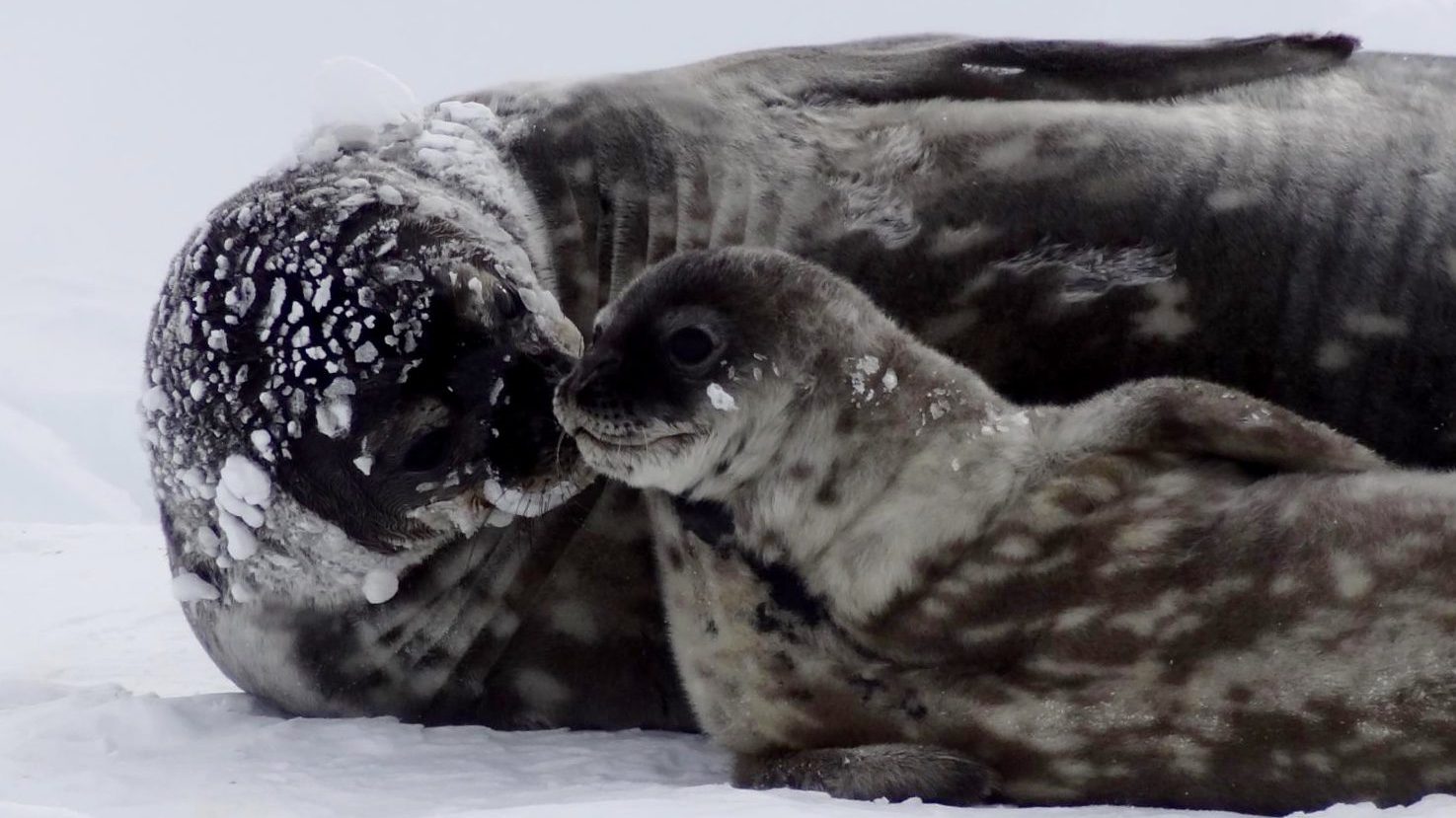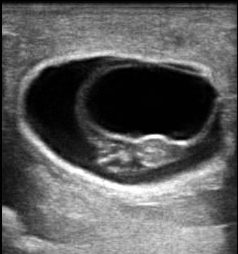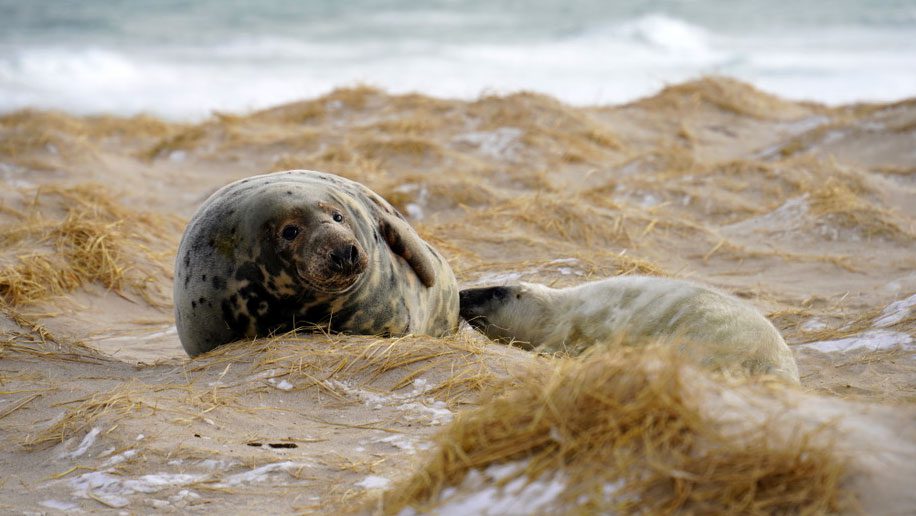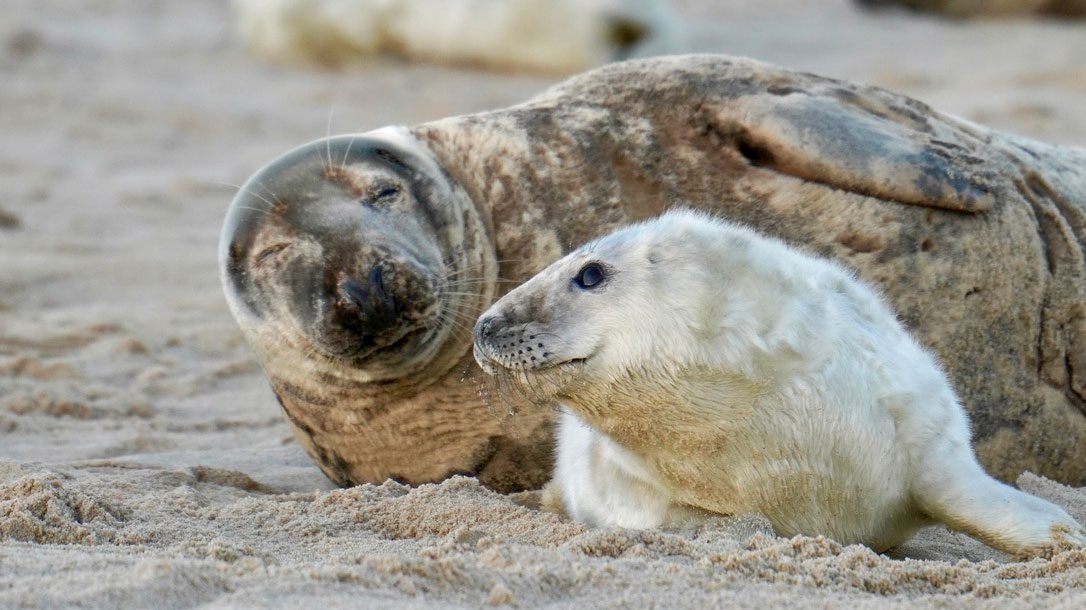Studying How Seals Adapt to Extreme Environments Could Lead to Benefits in Human Reproductive Health

Woods Hole, Mass. — Wild animals that have acquired adaptions to maximize their reproductive output in some of the world’s most extreme conditions may provide answers to some of the most pressing problems in the field of human reproductive health.
A newly published article by Michelle Shero, assistant scientist at the Woods Hole Oceanographic Institution's (WHOI) Biology Department, examines how the study of seals in particular can benefit human health, and it integrates various research on the topic. “When people think about biomedical research, they probably don’t immediately think about wildlife such as birds, cheetahs, bears, or seals – but they should,” said Shero.
Several aspects in the life history of seals that could provide significant insight into their reproductive physiology –as well as that of humans – include female seals’ ability to undergo lengthy fasting and lose about 30% of their body weight while nursing a pup. Seals also have an exceptional ability to hold their breath for up to two hours in some species, for long dives. The article offers another lesson from seals through their ability to ‘pause’ pregnancy, in a process known as embryonic diapause, so they can give birth in more advantageous environmental conditions, such as in warmer weather or when there is greater availability of food, according to Shero.
The ‘clever’ solutions wild animals have found to make a living (and thrive) at the ends of the earth can challenge assumptions and encourage a different way to address an issue, states the journal article, titled “How adaptive solutions from marine mammal life history could address pressing problems in reproductive biomedicine,” published in Fertility and Sterility Reports.
For example, marine mammals challenge the notion that insulin resistance is always detrimental , the article notes. “Instead of seals experiencing the negative effects people have with diabetes, insulin resistance may be advantageous in seals and other marine mammals in order to help these animals break down fats while preserving important muscle mass throughout the long fasts they endure while nursing,” said Shero. In humans, gestational diabetes can be especially dangerous because if the mom has too much glucose (sugar) in the bloodstream, that may also get transferred to the fetus causing the fetus to grow too quickly and increases the likelihood of birthing complications. However, seals appear to manipulate how glucose is transferred between maternal and fetal blood differently from all other animals studied to date and may provide insight into early intervention for human pregnancies with gestational diabetes, the article indicates.

To determine what environmental and physiological factors impact the seals’ ability to successfully produce pups, scientists can perform pregnancy ultrasound examinations. Timing of embryo implantation after a period of diapause is important for ensuring that seal pups are ultimately born when the environment is favorable. This shows an ultrasound of a Weddell seal embryo from McMurdo Sound, Antarctica. (Image credit: Michelle Shero, under permits: NMFS 17411)
While human fetuses can suffer life-long or fatal complications due to oxygen deprivation during birth, seals provide lessons in their ability to withstand extremely low oxygen levels as a routine event in everyday life – making long dives. “What marine mammals do to make it possible for them to dive for so long is really amazing. First, they carry so much more oxygen in their bodies than terrestrial mammals do. Then, the seals manage it really carefully – giving oxygen to the most sensitive organs such as the heart and brain, while almost entirely cutting off oxygen to other organs and muscles– to slow down their oxygen use. Finally, seals can tolerate much lower oxygen levels than human divers or even mountain climbers – and they can essentially ‘run on fumes’ once they have largely used their internal stores of oxygen,” said Shero, “This is even more incredible when we consider the fact that every time the adult seal dives, her fetus is brought along and responds in much the same way on all those dives too.”
In the article’s final lesson from the seals, Shero said scientists think embryonic diapause could be a capability inherent in the background across mammals, including humans. Learning how to ‘hit pause’ on pregnancy until conditions are optimal like seals do, would be a breakthrough for potentially improving the success rates for human in-vitro fertilization, the article noted. Early-stage embryos are often frozen for IVF, and the freezing process can cause damage. If the embryos could instead naturally slow or “pause” their growth, this problem could be all together avoided, and embryos could stay ‘on hold’ until they could be successfully implanted, Shero explained.
The article shows that wild animals navigating their natural world can provide new perspectives regarding important issues in reproductive health. “In seeking ways to improve human health, we should be looking to the extraordinary feats of wild animals – they have often found the most innovative solutions,” the article states.
Funding and support while writing this journal article was provided by the Every Page Foundation.
Author: Michelle R. Shero1*
Affiliations:
1Biology Department, Woods Hole Oceanographic Institution, Woods Hole, MA
About Woods Hole Oceanographic Institution
The Woods Hole Oceanographic Institution (WHOI) is a private, non-profit organization on Cape Cod, Massachusetts, dedicated to marine research, engineering, and higher education. Established in 1930, its primary mission is to understand the ocean and its interaction with the Earth as a whole, and to communicate an understanding of the ocean’s role in the changing global environment. WHOI’s pioneering discoveries stem from an ideal combination of science and engineering—one that has made it one of the most trusted and technically advanced leaders in basic and applied ocean research and exploration anywhere. WHOI is known for its multidisciplinary approach, superior ship operations, and unparalleled deep-sea robotics capabilities. We play a leading role in ocean observation and operate the most extensive suite of data-gathering platforms in the world. Top scientists, engineers, and students collaborate on more than 800 concurrent projects worldwide – both above and below the waves – pushing the boundaries of knowledge and possibility. For more information, please visit www.whoi.edu
Key Takeaways
- Wild animals that have acquired adaptions to maximize their reproductive output in some of the world’s most extreme conditions may provide answers to some of the most pressing problems in the field of human reproductive health.
- A new journal article by Michelle Shero, assistant scientist at Woods Hole Oceanographic Institution's Biology Department, examines how the study of seals in particular can benefit human health, and synthesizes various research on the topic.
- Several aspects in the life history of seals that could provide significant insight into their reproductive physiology—as well as that of humans—include female seals’ ability to undergo lengthy fasting and lose about 30% of their body weight while nursing a pup. Seals also have an exceptional ability to hold their breath for up to two hours in some species for long dives. Additionally, seals have the ability to ‘pause’ pregnancy, through a process known as embryonic diapause, so they can give birth during benign environmental conditions.
- In seeking ways to improve human health, we should be looking to the extraordinary feats of wild animals. They have often found the most innovative solutions.


